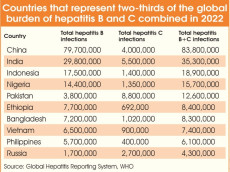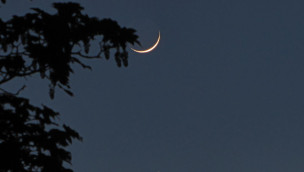MONKEYPOX, a new challenge to cope with
- News By : Web Desk
- 2022-05-24 14:57:37

London: 24 May 2022: Monkeypox is a viral disease getting much attention now a days after an increse in the usual number of cases seen in many countries around the globe.
Monkeypox is named so because the virus causing this disease was first detected by researchers in monkeys kept in a laboratory.
The disease is transmitted to humans from animals such as rats, mice and squirrels’s biting humans or exposure to their blood, body fluids, spots, blisters or scabs or by touching other products from infected animals (such as animal skin or fur).
Monkeypox can also be spread through:
1. Touching clothing, bedding or towels used by someone with the monkeypox rash.
2. Touching monkeypox skin blisters or scabs
3. The coughs or sneezes of a person with the monkeypox rash
THINGS YOU CAN DO TO AVOID GETTING MONKEYPOX
Although monkeypox is rare, there are things one can do to reduce your risk of getting it.
- Wash hands with soap & water regularly or use of an alcohol based hand sanitiser
-Eat meat that has been cooked thoroughly.
- Do not going near wild or stray animals, including sick or dead animals.
- Do not eat or touch meat from wild animals (bush meat).
- Do not share bedding or towels who are unwell or may have monkey pox.
-Do not have contact with people who are unwell or may have monkey pox.
A vaccine named JYNNEOSTM (also known as Imvamune or Imvanex) is an attenuated live virus vaccine which has been approved by the U.S. Food and Drug Administration for the prevention of monkeypox.
The Advisory Committee on Immunization Practices (ACIP) is currently evaluating JYNNEOSTM for the protection of people at risk of occupational exposure to orthopoxviruses such as smallpox and monkeypox in a pre-event setting.
SYMPTOMS OF MONKEYPOX
If one get infected with monkeypox, it usually takes between 5 and 21 days (average 7-14 days) for the first symptoms to appear.
The first symptoms of monkeypox include:
1. High temperature
2. Headache
3. Muscle aches
4. Backache
5. Swollen glands
6. Shivering (chills)
7. Exhaustion
Shortly after the prodrome (1 to 5 days after the first symptoms) a rash appears. The lesions typically begin to develop simultaneously and evolve together on any given part of the body.
The evolution of lesions progresses through four stages—macular ( 1−2 days ) , papular (1−2 days) , vesicular ( 1−2 days ) , to pustular ( 5−7 days)—before scabbing over (7−14 days) and resolving.
The rash is sometimes confused with chickenpox. It starts as raised spots, which turn into small blisters filled with fluid. These blisters eventually form scabs which later fall off.
A feature that distinguishes infection with monkeypox from that of smallpox is the development of swollen lymph nodes (lymphadenopathy).
The lymphadenopathy typically occurs with fever onset, 1–2 days before rash onset, or rarely with rash onset.
The Swelling of the lymph nodes may be generalized (involving many different locations on the body) or localized to several areas (e.g., neck and armpit).
The symptoms usually clear up in 2 to 4 weeks.
WHEN TO CONTACT DOCTOR OR CALL EMERGENCY SERVICES
When ou have a fever, rash with blisters and either:
You've returned from west or central Africa in the last 3 weeks
You've been in close contact with someone who has monkeypox in the last 3 weeks.
Make sure you tell the person you speak to if you've recently travelled to central or west Africa, or have had close contact with someone who has monkeypox.
Stay at home and avoid close contact with other people until you've been told what to do.
MANAGEMENT OF MONKEYPOX
Generally the treatment for monkeypox aims to relieve symptoms. The illness is usually mild and most people recover in 2 to 4 weeks.
But as monkeypox can spread if there is close contact, you will need to be isolated if you're diagnosed with it.
You may need to stay in a specialist hospital, so your symptoms can be treated and to prevent the infection spreading to other people.
An antiviral agent Cidofovir has been suggested as a possible treatment option in severe, life-threatening cases only.
Vaccinia immune globulin (VIG) can alsp be used in selected cases to control a monkeypox outbreak..










